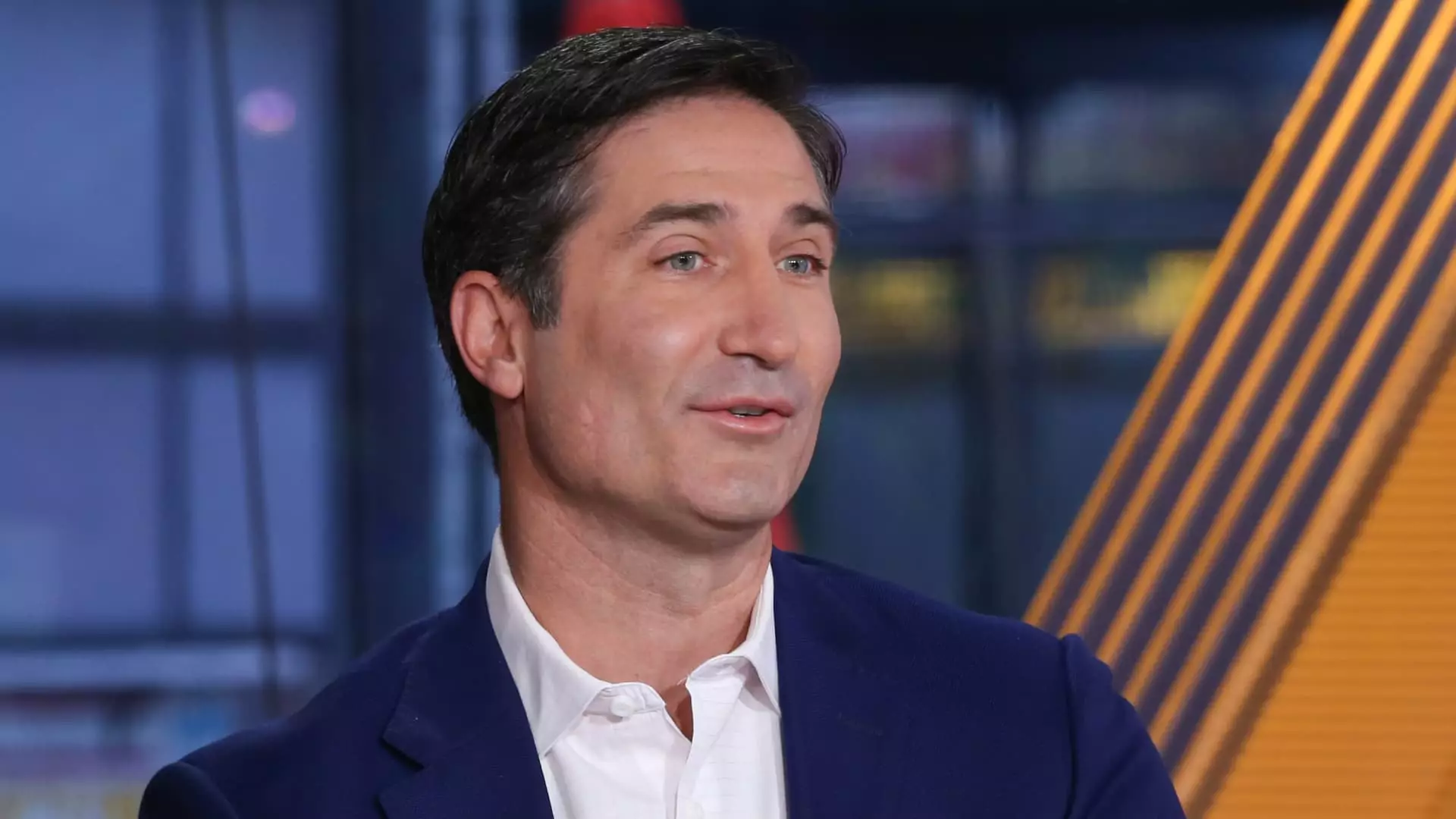Starbucks, the iconic coffee chain, once synonymous with premium coffee culture, has recently reported a notable downturn in its same-store sales for the fourth consecutive quarter. Despite the reduction in consumer foot traffic translating to a 4% decline in same-store sales, the company’s financial performance in terms of quarterly earnings and revenue managed to surpass Wall Street’s expectations. This paradox is striking; the broader implications suggest a deep-rooted concern about shifting consumer preferences and competitive pressures, particularly within the U.S. market where the company is now actively attempting a significant turnaround initiative.
The reported earnings per share of $0.69 exceeded the anticipated $0.67, while revenues also came in above expectations at $9.4 billion compared to the projected $9.31 billion. While the numbers themselves may seem encouraging, they unveil a narrative of a company grappling with its identity and core consumer base. The U.S. market, which historically has been a bastion of growth for Starbucks, has experienced substantial challenges over the past year, leaving many analysts questioning whether the company can adequately adapt to changing consumer dynamics.
With Brian Niccol assuming leadership in September, Starbucks has embarked on a strategic journey back to its foundational principles. The company’s efforts to reinvigorate focus on coffee quality and customer experience highlight an awareness of its heritage. This return to basics is not merely a nostalgic endeavor; it encapsulates a responsive approach to changing market conditions and customer expectations.
To counteract declining sales, Starbucks has implemented several tactical changes, such as eliminating extra charges for nondairy milk—a decision likely aimed at attracting a more health-conscious consumer demographic. Additionally, focusing marketing efforts back on coffee rather than ancillary products represents an attempt to realign the brand with its core mission. These adjustments seemingly reflect a broader recognition that customer loyalty is contingent upon the perceived value and quality of the coffee experience at Starbucks locations.
However, the challenges are not confined to the U.S. As Starbucks expands its footprint in international markets, particularly China—its second-largest market—similar declines in same-store sales were reported, down 6% amidst heightened competition. Local competitors like Luckin Coffee are undercutting prices, forcing Starbucks to reconsider its pricing strategies, as evidenced by the increased emphasis on discounts. This shift towards a more price-sensitive approach poses significant risks to the perceived premium positioning of the Starbucks brand.
The statistics show a concerning trend; a 4% decline in the average ticket in China coupled with declining traffic reflects not just the impact of competition but also a potential waning of brand loyalty. The goal of pushing a more aggressive pricing strategy may appeal to current trends but could ultimately dilute the brand’s equity in the long run.
In light of the setbacks, Starbucks has opted to suspend its fiscal 2025 projections while focusing on a gradual resurgence strategy. This pivot involves a strategic reduction in new store openings and renovations to reallocate capital towards revitalization efforts. Such a move suggests an understanding that aggressive expansion may not be sustainable in the current economic climate and indicates a shift toward bolstering existing operations.
Moreover, Niccol’s initiative to restructure the corporate workforce by separating the North American president’s role into two distinct positions signals an intent to enhance operational efficiency. The anticipated layoffs raise questions about workforce stability and the implications of such decisions on employee morale and internal culture.
Starbucks stands at a critical juncture as it navigates through tumultuous terrain marked by declining sales figures alongside strong earnings performance. With a leadership that is intent on revisiting the core tenets of the brand and adjusting its strategy to meet the dual challenges of domestic stagnation and competitive international markets, there is potential for recovery. However, the journey will demand careful navigation of the delicate balance between maintaining brand prestige and responding to an evolving marketplace. Time will reveal whether these strategic pivots will effectively resonate with both existing and potential customers.

